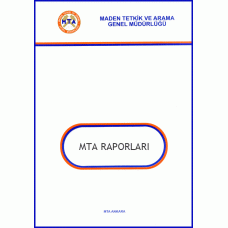ABSTRACT
Stratigraphy, facies architecture and depositional systems of the Miocene sedimentary fill of the Late Cenozoic Antalya Basin have been studied in order to contribute towards understanding of the basin formation, evolution and deformation in a tectonically active region, the Isparta Angle, which is a north pointing cuspate structure that formed at the junction of the Hellenides and Taurides arcs. A particular attention is directed towards evaluating tectonic, climatic and eustatic controls on the depositional systems of the basin fill and its implications for the reconstruction of the last stages of the closure of the Isparta Angle and the associated paleogeomorphology.
The Antalya Basin is an extension-compression related late post-orogenic basin that developed unconformably on a foundered basement comprising a Mesozoic paraauthocthonous carbonate platform (s) overthrust by the Lycian Nappes, the Antalya Nappes and the Alanya Massif metamorphics in the Isparta Angle. The Miocene fill of the basin is characterized by a thick accumulation of clastic-dominated sediments with locally developed reefs and reefal shelf carbonates. Based on chronostratigraphic and lithostratigraphic considerations, integrated with previously established data, the Miocene fill of the Antalya Basin is reorganized into nine formations and twelve members. A total of twenty facies have been distinguished within this stratigraphic framework. Time and space relationships of these facies indicate a variety of facies associations that represent deposition in colluvial and alluvial fan, fan delta with patch reefs, prodelta to open clastic shelf, base of slope to basin floor fan, reefal carbonate shelf and base of fault-controlled fore reef slope environments.
Late Miocene compressional deformation has resulted in fragmentation of the basin into present configuration, which is characterized by three distinct parts, referred herein as Aksu, Köprüçay and Manavgat sub-basins respectively which are bounded by north-south extending dextral Kirkkavak Fault and the westward-verging Aksu thrust.
The northeast-southwest trending Manavgat sub-basin to the east is weakly deformed, with a continuous deposition from Burdigalian to Messinian and is probably related to the Adana basin. In contrast, the north-south extending Köprüçay and Aksu sub-basins are strongly tectonised. In the Köprüçay sub-basin, facies associations and dating show, from north to south, the transitions from alluvial fan through fan delta to submarine facies, becoming deeper near the Kırkkavak fault. Along this fault, coarse carbonate breccias (Langhian in part), reflect its synsedimentary activity. In the same way, the conspicuous onlap of the Selge conglomerate (Langhian and younger) upon the basal Oymapmar limestone shows the early tilting of the basin.
| Rapor Özellikleri | |
| Rapor No | 10711 |
| Rapor Adı | MIOCENE TECTONOSEDIMENTARY EVOLUTION OF THE LATE CENOZOIC ANTALYA BASIN |
| Konu | JEOLOJİ |
| Yer - Konum | ANTALYA |
| Dil | İNGİLİZCE |
| Yayın Tarihi | 01.11.2004 |
| Hazırlayan Birim | JEOLOJİ ETÜTLERİ DAİRESİ BAŞKANLIĞI |
| Yazarlar | ATTİLA ÇİNER GIANRETTO MANATSCHAL MAX DEYNOUX MUSTAFA KARABIYIKOĞLU OLİVİER MONOD SEVİM TUZCU |
MIOCENE TECTONOSEDIMENTARY EVOLUTION OF THE LATE CENOZOIC ANTALYA BASIN
- Markalar MTA
- Ürün Kodu: DR10711
- Stok Durumu: Stokta var
-
452,00TL

